Her first two were with Monty and the final four with Idris. Here's an updated chart for your records:
Two Chicks, one DNH and a New Record
Sea bass
And here's the record breaking chick hatching this week.. it's important to note that this chick came from Egg 2, the first egg did not hatch this year.
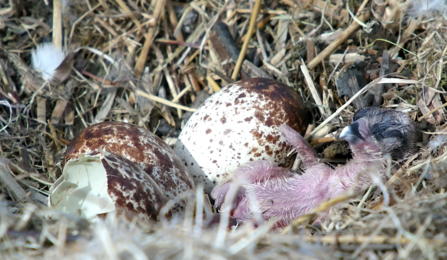
1st Chick hatches
Here are the dates and incubation times for this year's clutch:
- 🐣 DNH
- 🐣🐣 23rd May at 17:10 (37.0 days)
- 🐣🐣🐣 25th May at 07:16 (35.7 days)
These fall in line with averages for previous hatchings over the last 12 years, varying only by a few hours:
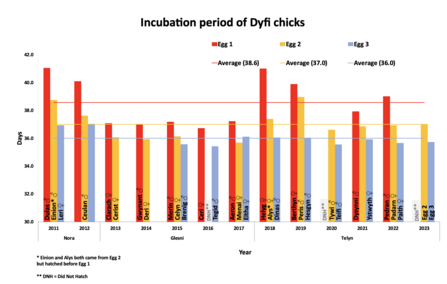
Incubation times of all Dyfi chicks
Why Didn't Egg 1 hatch?
It's important to remember that, depending on the species, around 10% of all birds' eggs laid in the world do not hatch. There are a variety of reasons for this.
If an egg is not fertilised, it will never hatch, even if incubated for the whole term. Only Telyn's genetic material would be in that unfertlilised egg, making it impossible for a chick to develop.
But even if fertilised, a chick may have failed to develop properly. The very first few days and the very last few days of the incubation period are when most chicks fail to develop and die in the egg. These first and last days are critical to development.
This is the third DNH we've had at this nest. That's three out of a total of 37 eggs laid, so the 10% rule of thumb is not far off here. Blue 5F at the Llyn Clywedog nest just down the road also had a DNH this year.
But I have a little hypothesis as to why both of Telyn's two DNH eggs (2020 & 2023) were the first egg laid...
To Delay, or Not to Delay. That is the Question...
I've talked about the strategy of Delayed Incubation in ospreys before. In a nutshell, delaying 'proper' 24-hour incubation until the second egg is laid compresses the hatching window, resulting in all three chicks for most osprey broods hatching closer in age.
Delaying incubation helps assure that rapidly growing young are in the same stages of development. In the presence of an abundant food supply, more young will likely survive when incubation is delayed, since there will be less variation in size and ability between older and younger siblings, and food should be shared more equitably as a result.
Peregrine falcons delay full incubation consistently until the third egg in a four-egg clutch, and the fourth egg in a five-egg clutch. So, do all ospreys employ a Delayed Incubation strategy?
Well, no. They don't.
Both Nora and Telyn employed the Delayed Incubation strategy, but Glesni did not.
This table elegantly shows the hatching spans of all three females when they produced three-chick broods.
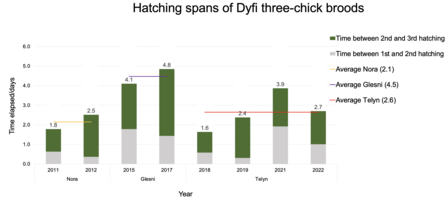
Delayed vs Immediate Incubation Strategies, Nora, Glesni & Telyn
Telyn and Nora's three chicks all hatched within 2.6 and 2.1 days respectively. However, Glesni's three chicks, on average, took almost twice as long to hatch – 4.5 days.
Glesni would start incubating immediately after she laid her first egg of the year.
So hang on a minute, if a Delayed Incubation strategy is so advantageous, why don't all osprey females do it? Why isn't the Immediate Incubation strategy selected out of the population?
When two 'competing' strategies like this exist in nature, they tend to exist in a 'frequency-dependent' equilibrium.
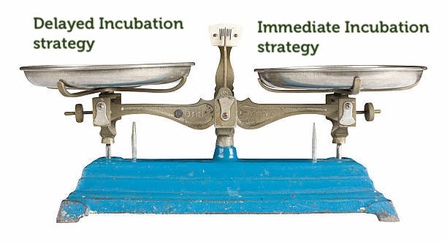
Weighing up the advantage...
If one gets too heavy (prolific), the other one will weigh it down until the frequency dependent stasis is achieved again. This means only one thing – both strategies have their pros and cons.
The Pros and Cons of Hitchhiking
I used to hitchhike to Butlins Pwllheli to play snooker every Saturday when I was a kid. It's a great way to get around.
But this form of transport exists in a frequency dependent stasis. If everybody hitchhiked, who would they get their rides from?
Too much of one will always reach a ceiling and drag the other strategy up. Altruism in bee eaters and unfaithfulness in pied flycatchers are great examples of these competing strategies in nature.
So if the 'pros' of a Delayed Incubation strategy are greater survival chance due to chick ages being similar, what are the 'cons'?
Well, the very fact that a parent is not incubating its egg means it immediately increases predation pressures. Owls are deadly silent.
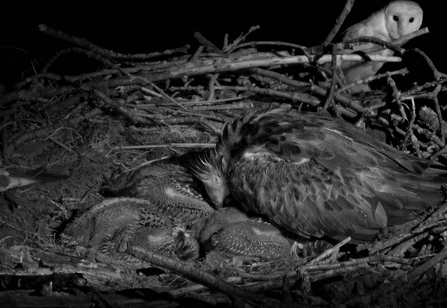
Barn owl
But what about temperature? It was cold and stormy just before the first egg was laid.
We know that freshly laid eggs can spend a lot of time in the zone of suspended development. Eggs of some birds of prey species can withstand weeks at a temperature of just 5C. But there has to be some risk of this little experiment in the wild, right?
No osprey mother can see inside her egg and make judgment calls to incubate depending on whether things are progressing as they should. The Delayed Incubators rely on evolution's track-record of experiments to guide them.
So my humble little hypothesis is this..
A Delayed Incubating Strategy is more prone to DNH eggs than the competing Immediate Incubation Strategy. The pros of closer chick ages is countered by slightly fewer chicks hatching, resulting in a roughly similar productivity success on a population level. That's why both strategies exist in a frequency dependent stasis.
We need a lot more data in the future to deep dive into this theory, but I'm just putting it out there. Treat it as purely anecdotal for now.
Right, that's more than enough science for one weekend - here's the hatching video...
